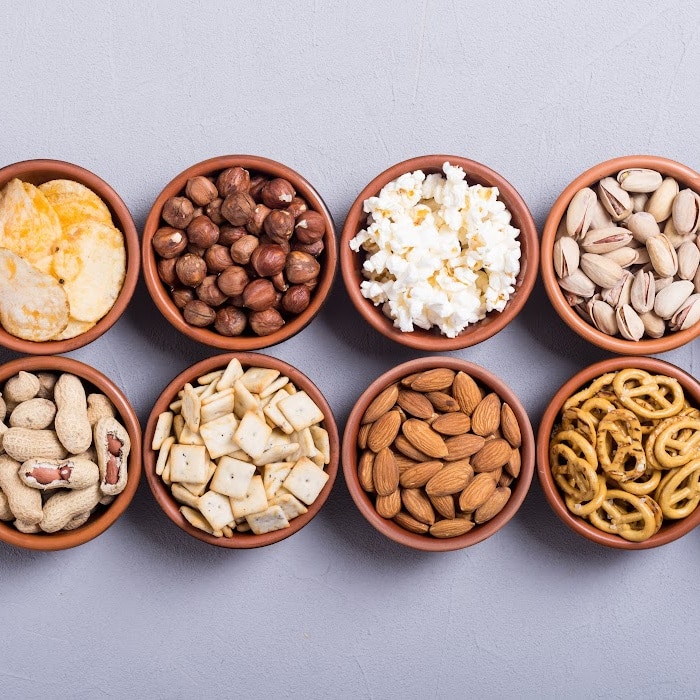Ever picked up a snack labeled “healthy,” “low-fat,” or “natural” and thought you were making a great choice? Turns out, a lot of these so-called “healthy” options are hiding some sneaky ingredients that could be doing more harm than good.
Before tossing that granola bar or “sugar-free” yogurt into your cart, let’s look at the hidden dangers lurking in popular “healthy” snacks and what to watch out for.
1. Sneaky Sugars Masquerading as Healthy Ingredients
Food companies know people are looking to cut back on sugar, so they get creative with how they list it on labels. Instead of “sugar,” you might see:
- Agave nectar
- Cane juice
- Malt syrup
- Brown rice syrup
- Fruit concentrate
These might sound more natural, but they still spike blood sugar levels and contribute to cravings, energy crashes, and weight gain.
Even snacks marketed as “sugar-free” often contain artificial sweeteners like aspartame or sucralose, which can mess with digestion and hunger cues.
2. “Low-Fat” Usually Means “High-Sugar”
Remember the low-fat craze from years ago? It turns out, when fat is removed from food, it’s often replaced with sugar, artificial flavors, or other fillers to make it taste good.
Common culprits include:
- Flavored yogurts
- Low-fat granola bars
- “Diet” cereals
- Fat-free salad dressings
Your body actually needs healthy fats to keep you full and satisfied. Instead of falling for low-fat marketing, opt for snacks with real, whole-food ingredients like nuts, seeds, and avocado.
3. Processed Oils That Cause Inflammation
Many packaged “healthy” snacks contain vegetable oils like soybean, canola, and sunflower oil. These oils are highly processed and have been linked to inflammation, which can contribute to weight gain, joint pain, and even long-term health issues.
Common offenders include:
- Baked chips
- Protein bars
- Packaged trail mixes
- Crackers
For a better option, look for snacks made with coconut oil, olive oil, or no added oils at all.
4. “High Protein” Doesn’t Always Mean Healthy
Protein bars and shakes are everywhere, but many contain more processed ingredients than actual nutrition. Some contain:
- Artificial flavors and sweeteners
- Highly processed soy protein
- Sugar alcohols that cause bloating
A better choice? Stick with whole food protein sources like nuts, seeds, boiled eggs, or plain Greek yogurt with a drizzle of honey.
5. Misleading Serving Sizes
Ever look at a snack label and think, “Wow, only 100 calories!”—only to realize later that the tiny bag you just ate was actually three servings?
Food manufacturers often shrink serving sizes to make their snacks look healthier than they actually are. Always check the total calories, sugar, and fat content for the full package, not just one serving.
Smarter Snack Swaps
Now that you know what to watch for, here are some simple swaps to keep snacks both healthy and delicious:
| Instead of This | Try This |
|---|---|
| Flavored yogurt | Plain Greek yogurt with fresh berries |
| Granola bars | A handful of nuts and dark chocolate |
| Baked chips | Homemade kale chips with olive oil |
| Protein bars | Hard-boiled eggs or cottage cheese |
| Packaged trail mix | DIY trail mix with raw nuts and dried fruit |
Final Thoughts
Healthy eating doesn’t mean giving up snacks—it just means choosing wisely! By reading labels, avoiding sneaky sugars, and going for real, whole ingredients, you can keep your snacks both satisfying and good for you.
Next time you grab a “healthy” snack, take a second look at that ingredient list—you might be surprised at what’s hiding inside!
Want more easy swaps and snack ideas? Stick around for more simple, healthy living tips!



